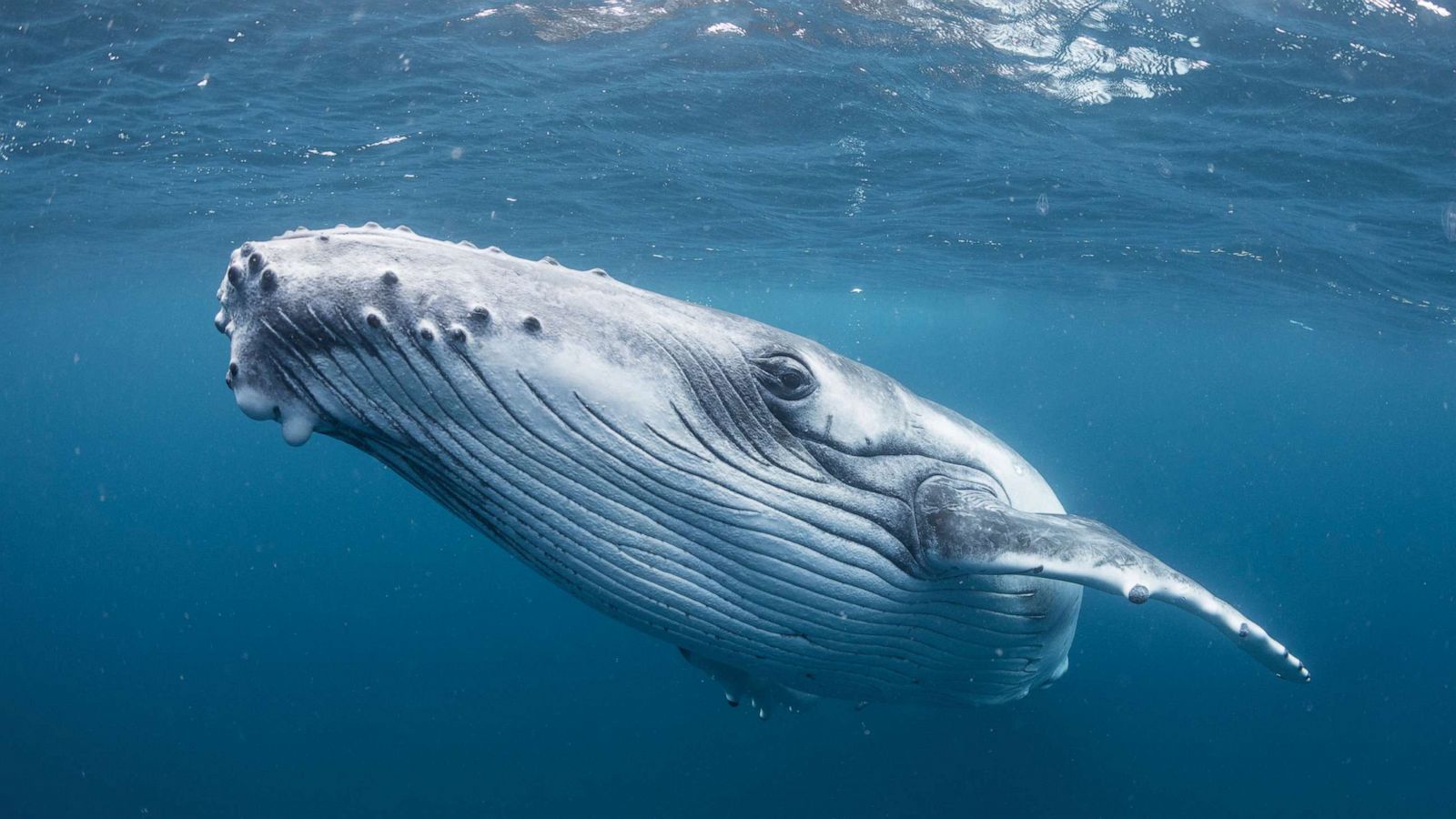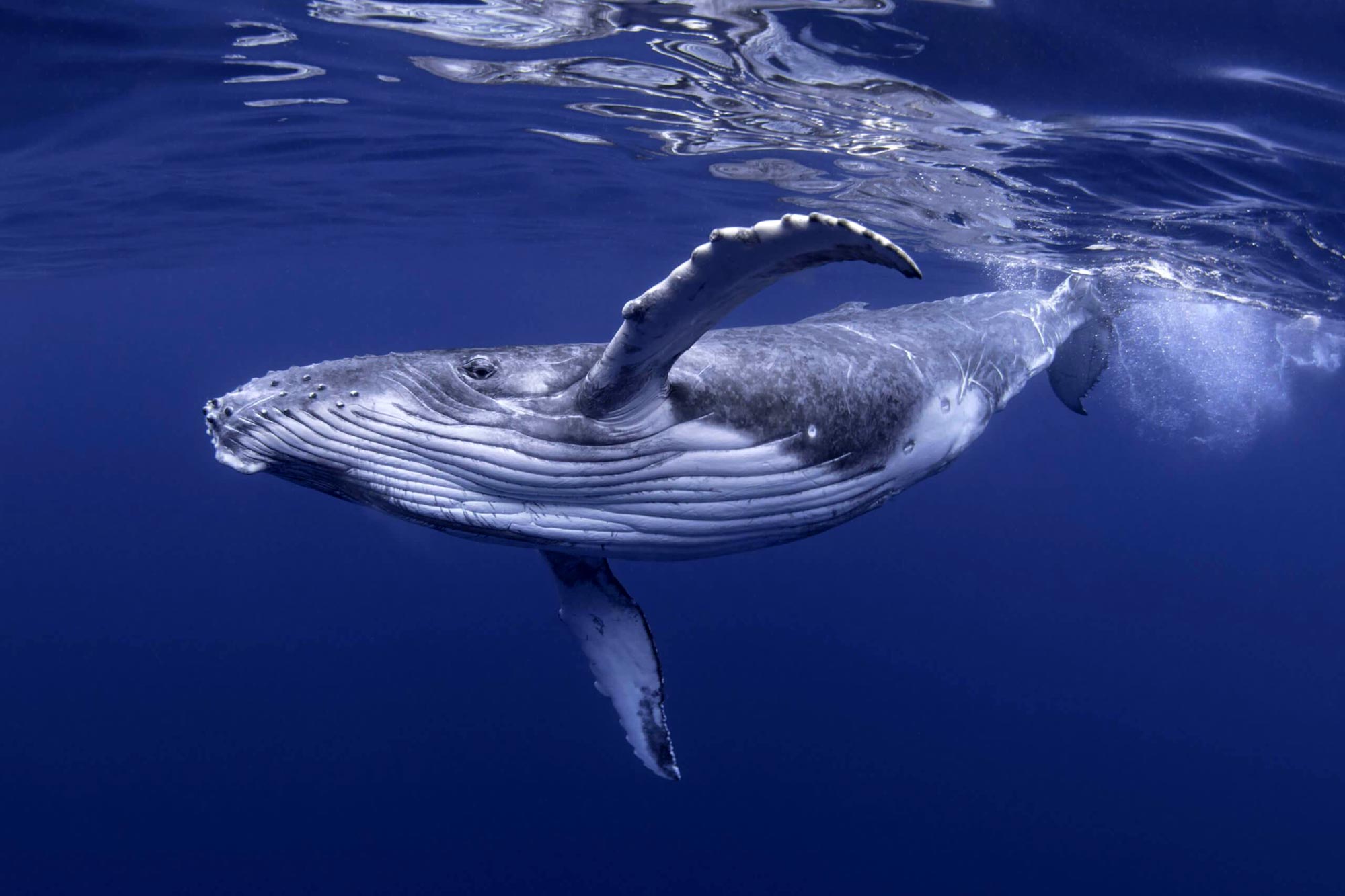Whales | Marine Biology
Whales are distributed throughout the world’s oceans and seas, from the Equator to the polar ice, except for the landlocked Caspian and Aral seas. They are mammals, and they share the defining traits of that group: they breathe air, are warm-blooded, give live birth, suckle their young on milk, and have hair. All are entirely aquatic, with specialized adaptations such as flippers and tail flukes for living in water. Whales must surface regularly to breathe, evacuating their lungs more completely than most mammals in an almost explosive breath known as a blow. Blows are visible because water vapour in the whale’s hot breath condenses when the blow is released.
Whales roam throughout all of the world's oceans, communicating with complex and mysterious sounds. Their sheer size amazes us: the blue whale can reach lengths of more than 100 feet and weigh up to 200 tons—as much as 33 elephants.
Some whales are known as baleen whales, including blue, right, bowhead, sei, and grey whales. This refers to the fact that they have special bristle-like structures in their mouths (called baleen) that strain food from the water. Other whales, such as beluga or sperm whales, have teeth.Many of us believe whales are special; they certainly invoke a sense of wonder and a feeling of kinship. There is something almost other-worldly about them. Whales enrich the lives of many people who come into contact with them. Whales are unique, beautiful, graceful and mysterious; they nurture, bond, play, sing and cooperate with one another. Here are some extraordinary facts about whales and their lives in the oceans.
Male humpback whales are the best-known singers; their songs are beautiful, complex and ever-evolving. Their songs can last for up to 30 minutes and feature various themes sung in a sequence that is common to all males in the same breeding area that year. The sounds they sing span 7 octaves, nearly the entire range of a piano. During the winter mating season, they repeat their songs over and over for hours at a time and gradually change them as the breeding season progresses. Each year a new song is produced.
Bowheads have the greatest number and diversity of songs of all whales and they like to improvise, just like jazz musicians. In fact, the diversity and variability of their songs is rivalled only by a few species of songbirds!In modern commercial and “scientific” whale hunts the primary killing method is the penthrite (pentaerythritol tetranitrate) grenade harpoon, which is fired from a cannon mounted on the prow of the hunting vessel. The harpoon, which is aimed by hand, creates an initial hole in the whale’s body that is about 8 inches (20 cm) wide and 12 inches (30 cm) deep; the grenade in the harpoon then explodes, causing massive injury or death to the whale through laceration or trauma, including neurotrauma (trauma to the brain) produced by shock waves. Spring-loaded claws in the point of the harpoon extend to anchor the harpoon in the whale’s flesh, thereby also widening the hole in its body to about 24 inches. The whale can then be towed by the line attached to the harpoon.
Despite its present focus on protection and conservation, the IWC recognizes the legitimacy of what it calls aboriginal subsistence whaling, though it regulates this form of hunting by issuing five-year killing quotas scaled to the needs of indigenous communities and by requiring that all the meat and blubber be consumed locally. Currently the IWC allows subsistence hunting in Greenland, Russia, the United States, and St. Vincent and the Grenadines.
If you enjoyed reading this, you might like my previous post on Dolphins, check it out:
https://musings-of-a-musical-biologist.blogspot.com/2021/06/dolphin-marine-biology.html
Citations:
About whales-
https://www.britannica.com/animal/whale
https://www.worldwildlife.org/species/whale
Whale songs-
https://uk.whales.org/whales-dolphins/facts-about-whales/
Whale killing-
https://www.britannica.com/explore/savingearth/hunting-the-whales






👌👌
ReplyDelete:))
Delete